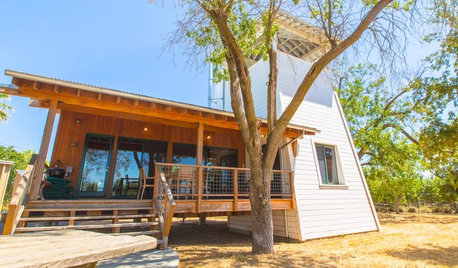citrus standards?
castorp
19 years ago
Related Stories

YELLOWCitrus Hues Add Zest to Rooms
You almost don't need to clean when you wash your spaces with the refreshing colors of lemons, limes and oranges
Full Story
GARDENING GUIDESGreat Design Plant: Kumquats for a Juiced-Up Winter
Grow it for the edible fruit or its good looks alone. This citrus cousin will brighten any gray winter day
Full Story
DECORATING GUIDESSingle Design Moves That Make the Whole Bedroom
Take your sleeping space from standard to extraordinary in one fell swoop
Full Story
MATERIALS10 Modern Marble Looks
Marble has broken free of the standard kitchen countertop slab and is showing up on bathtub backsplashes, modern dining tables and more
Full Story
PRODUCT PICKSGuest Picks: Get Juicing
Stay hydrated and healthy with these tools and accessories for juicing fruits and vegetables right at home
Full Story
DECORATING GUIDESGo for a Greenhouse Effect With an Exotic Conservatory
Cultivate a rarified hothouse feel with or without all-glass walls; these inspiration photos and product picks show you how
Full Story
COLORBathed in Color: Favorite Yellows and Golds for the Bath
Get a golden glow for your bathroom with these expert paint picks and ideas for yellow walls
Full Story
HOUZZ TOURSHouzz TV: See a Modern Family Farmhouse That Can Pick Up and Move
In the latest episode of Houzz TV, watch California architect build a beautifully practical cabin to jumpstart his parents' new farm
Full Story
EDIBLE GARDENSHow to Grow Your Own Peaches and Nectarines
Make gardening a little sweeter with these juicy fruits, which you can eat after plucking or preserve for later
Full Story
EDIBLE GARDENSHow to Grow 10 Favorite Fruit Trees at Home
Plant a mini orchard in fall, winter or early spring to enjoy fresh-off-the-tree fruit the following year
Full Story





ianna
castorpOriginal Author
Related Professionals
Bloomington Landscape Contractors · Burien Landscape Contractors · Centereach Landscape Contractors · Hoover Landscape Contractors · Middletown Landscape Contractors · Mission Viejo Landscape Contractors · New Berlin Landscape Contractors · Twin Falls Landscape Contractors · Castro Valley Driveway Installation & Maintenance · Los Gatos Driveway Installation & Maintenance · Compton Window Contractors · Coral Terrace Window Contractors · Deltona Window Contractors · Muncie Window Contractors · Ruskin Window Contractorsianna